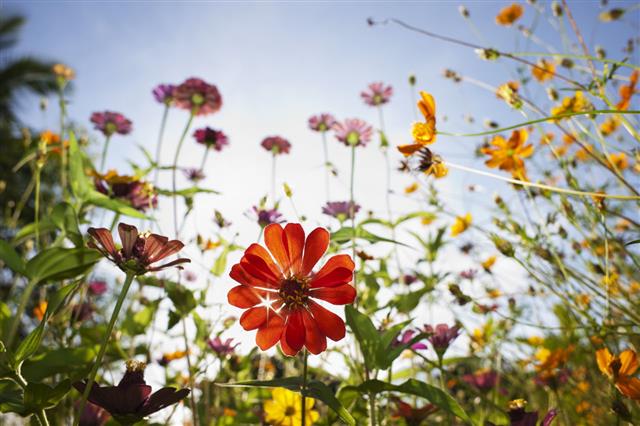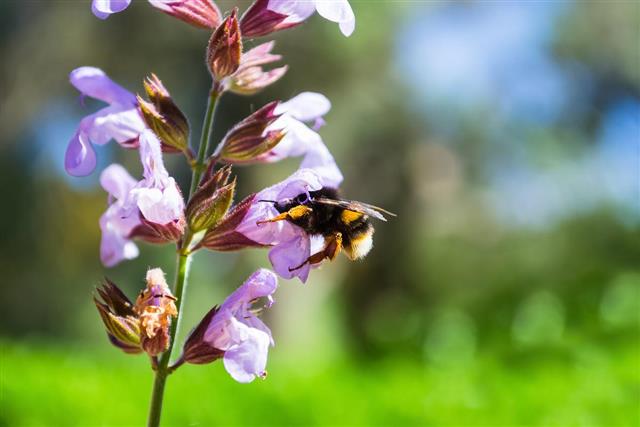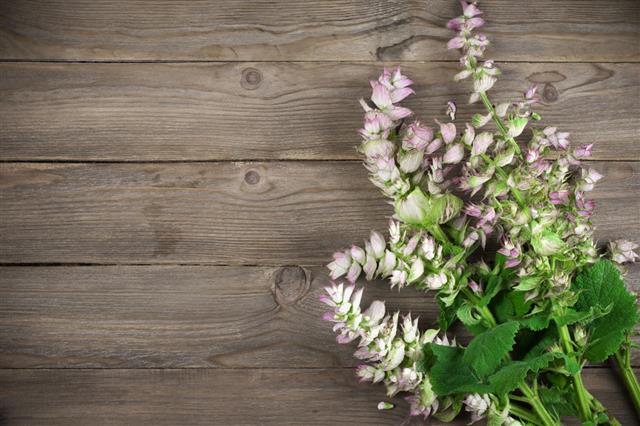
Wondering how to cultivate your dry backyard into a garden? This Gardenerdy article enlists plants that need little water to grow and survive. Planting such low-maintenance trees will help you develop your garden even if your area experiences less rainfall and extreme climatic conditions.
A Useful Tip
Try to choose native plant species for your yard, as they are better at surviving on less water than exotic species.
Why do some plants need less water to grow? It is because those plants are well adapted to their native environment, where they can survive in the available rainfall, and the climate specific to that region. On the contrary, exotic plants, or the ones that aren’t native to a particular region, will demand more water and extra care for survival. However, this does not mean that native plant species don’t need water at all. For instance, if you are planting trees in dry regions, learn that they will need some amount of water to get started, and then grow perfectly well with very little water.
As a matter of fact, we tend to overestimate the amount of water that plants require, especially the low-maintenance or drought-tolerant varieties. Excessive moisture reduces the oxygen content in the soil, which is essential for proper functioning of the roots. Furthermore, vital plant nutrients are drained from the soil, which leads to nutritional deficiencies in plants, and makes them susceptible to diseases and insect infestations. Looking at the surface soil, one cannot determine whether the plant needs to be watered or not. The ideal way to know the water requirement is by checking the moisture in the soil, a couple of inches below the top soil.
Desert Rose
This is a wonderful flowering plant that grows up to a height of 5 feet, with a swollen multi-stemmed base, and beautiful flowers in red, pink, and white. The plant can go a long way in drier climates, but can’t withstand cold weather.
During the initial period of establishment, the soil needs to be kept evenly moist, but not wet all the time. When the desert rose is planted in a container, offer easy drainage to keep the roots from standing in water for extended hours. In dry climates, the plant needs to be watered every 2 to 3 days, while in humid climates, watering every 10 days should be sufficient.
Orange Cosmos
Being an annual flowering plant, orange cosmos grows best over the course of one year, and tends to bloom in late summer. It is known for its erect growth with a very fine foliage, which spans up to the height of approximately 4 feet.
It is a drought-tolerant plant, and hence, needs to be watered sparingly for better growth. During a long span of dry weather, when the leaves show wilting signs, impregnate the entire rooting system with water, and wait for the next watering session until the soil becomes completely dry.
Snake Plant (Mother-in-Law’s Tongue)
The snake plant is a slow-growing plant with stiff leaves growing in an upward direction. The leaves have dark-green colored horizontal stripes with a yellowish border. The plant can grow up to 4 feet, and produce greenish flowers. An interesting characteristic of this plant is that the amount of light the plant receives determines its color. Although these plants can survive in shade, they get an attractive color when exposed to plenty of natural light.
It has been referred to as the hardest-to-kill house plant. It requires the least of your attention, and can thrive easily even in extremely neglected circumstances. It is considered a good plant for beginners in gardening, due to its potential to tolerate an imbalanced watering schedule. Moreover, the plant prefers less watering, and if over-watered, it may rot.
Coreopsis Grandiflora
The name says it all, they are grand flowering plants, with a cheerful yellow color. They are perennial plants, and have a clump-forming habit. These plants grow erect on leafless stems up to the height of approximately 2 feet. Like the orange cosmos, the coreopsis grandiflora also has long and slender foliage, on which daisy-like flowers bloom in their bright-yellow color. The blooming season begins in summer and occurs repeatedly through fall.
As it is with other low-maintenance plants listed out here, coreopsis needs generous watering initially for healthy establishment. Once it settles itself, it can be left unwatered for about 2 – 3 weeks. In the damp season, these plants may suffer from fungal diseases, or fall prey to snails and slugs. However, to avoid these problems, it is advisable to place the plants in full sunlight and offer sufficient air circulation.
Zamioculcas Zamiifolia Plant (ZZ Plant)
It is one of the few houseplants that can be brought home and forgotten; the reason being its minimal maintenance requirements. There are no such peculiar plant care methods to be applied to keep the plant’s beautiful look intact. The plant remains extremely healthy even in neglected conditions.
The ZZ plant needs water to start off and establish itself. Due to its dark-green foliage, the plant has the capacity to store the absorbed water in its thick, tuber leaves, and fleshy stems. With this potential, the plant can go for weeks and weeks without water; watering the plant every two weeks is better, though.
Sage
It is considered a colorful plant that adds grace to your herb garden, and at the same time, attracts several pollinators, especially bees, for the wonderful treat of honey. It is also used in the kitchen to add an aromatic flavor to meat and cheese.
This multipurpose plant has very little water requirements, and is an overall low-maintenance herb. However, if you are growing it from a seed, brace yourself for its slow growth. Once the herb is established though, it is a tough plant that can tolerate almost any extreme weather conditions. The size of the plant determines its water needs, but to begin with, use 2 cups of water every three days while the plant is establishing itself. Look for fungus or mold at the base of the plant, which is a good indicator of over-watering. Sage prefers light, well-drained gardening soil, and dainty sips of water for its proper growth. On the contrary, soggy and wet conditions will make the plant unhappy, and it may rot in such conditions.
Yucca
It is such a hardy shrub, that it’s often referred to as a ‘no water plant’. It is one of the best houseplants that can survive in almost any extreme condition, while maintaining its graceful appearance. Moreover, yucca plants grow best in natural bright sunlight, hence, placing them near a window in winter would be better.
Yucca is a dry plant by nature, and may suffer badly due to over-watering. By checking the soil at 2.5 cm depth in the pot, you can determine whether the plant needs to be watered or there’s still some moisture that is sufficient for the plant. Brown tips of the leaves with a yellowish outline is an appropriate marker of over-watering.
Other low-maintenance plants include:
❑ Ponytail Palm
❑ Tillandsias
❑ Butterfly Weed
❑ Blanket Flower
❑ Grand Crinum Lily
It is always better to maintain dryness in the soil surface between watering sessions to keep weed problems at bay. For instance, dollar weed is a semi-aquatic plant and needs moist soil to grow. If you notice dollar weeds around your plants, know that your plants are getting too much water.










